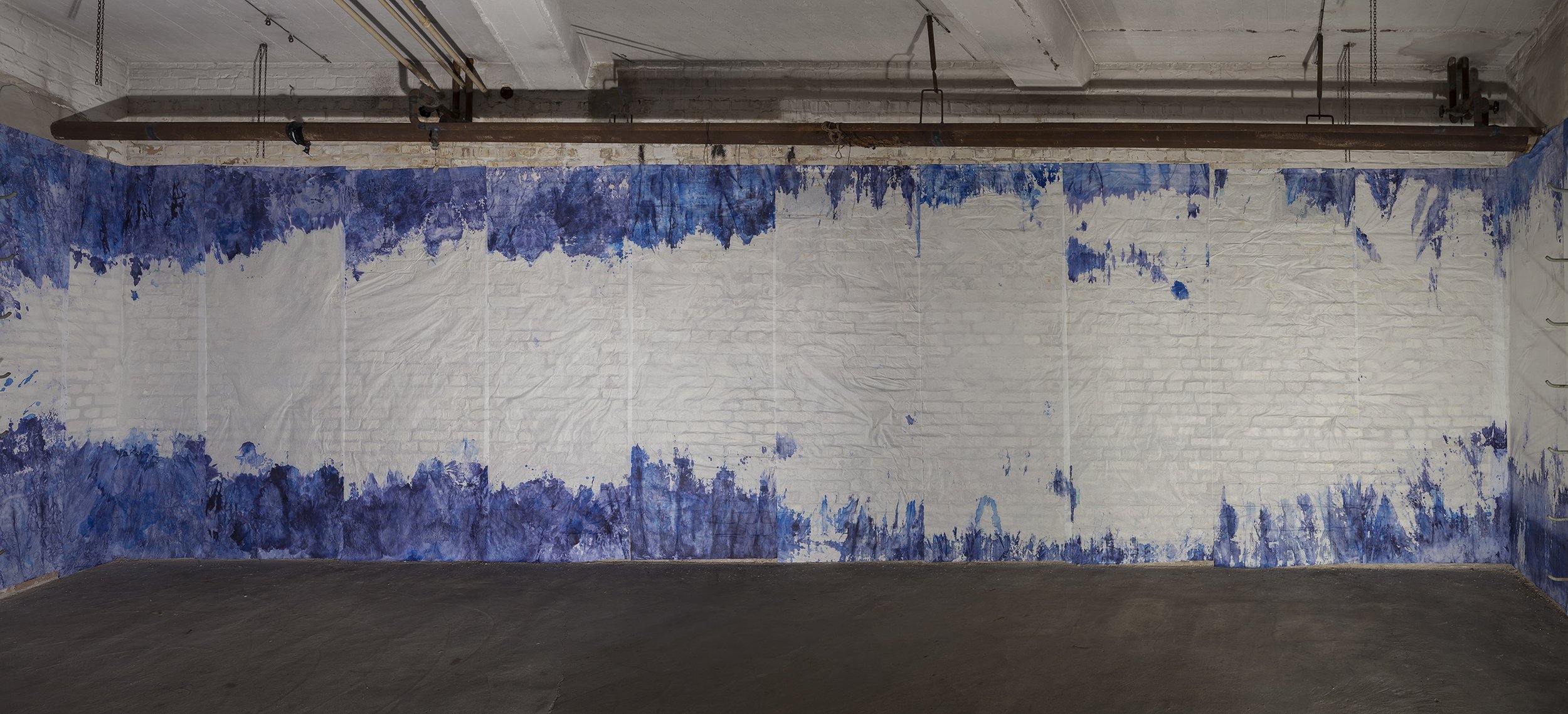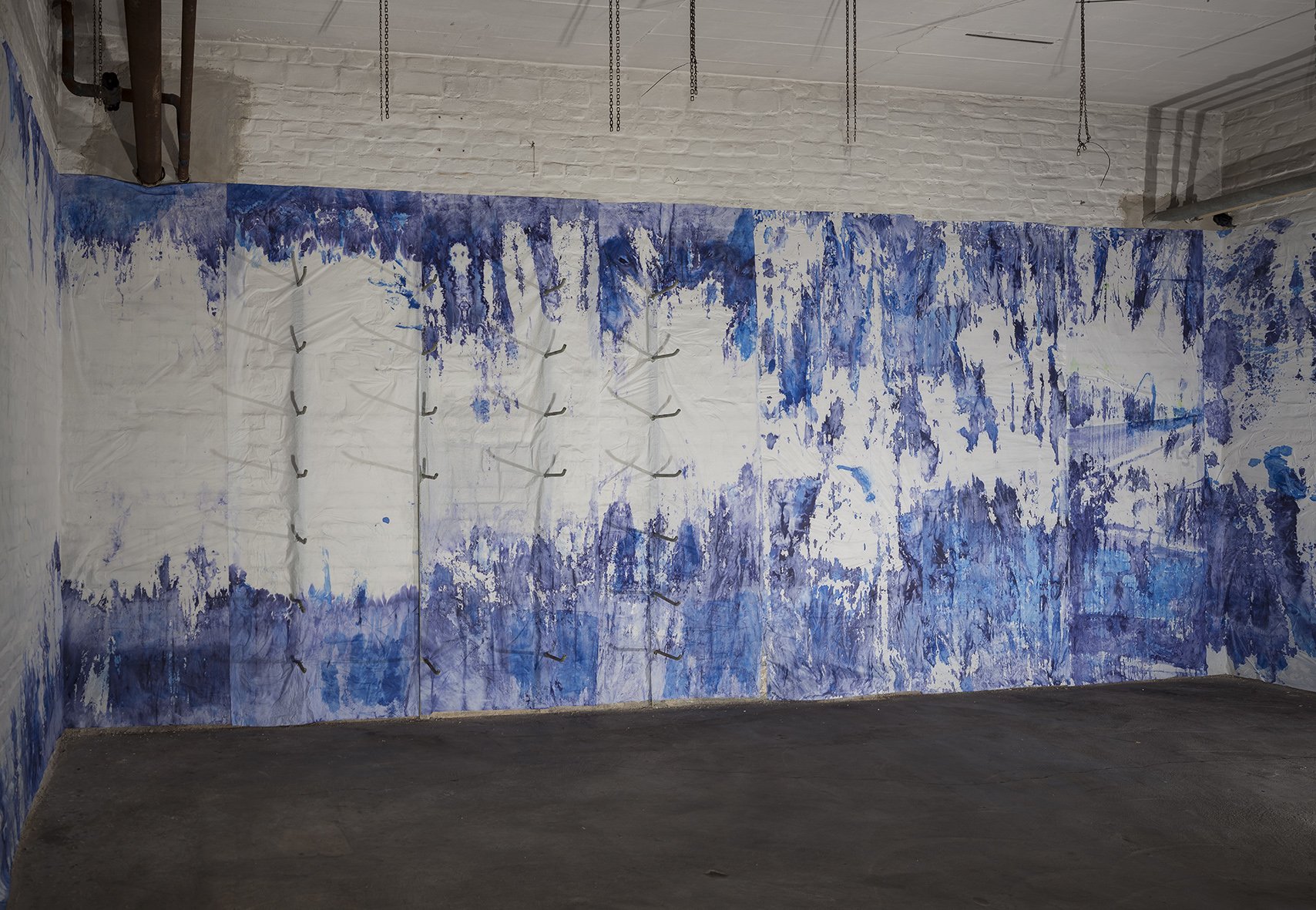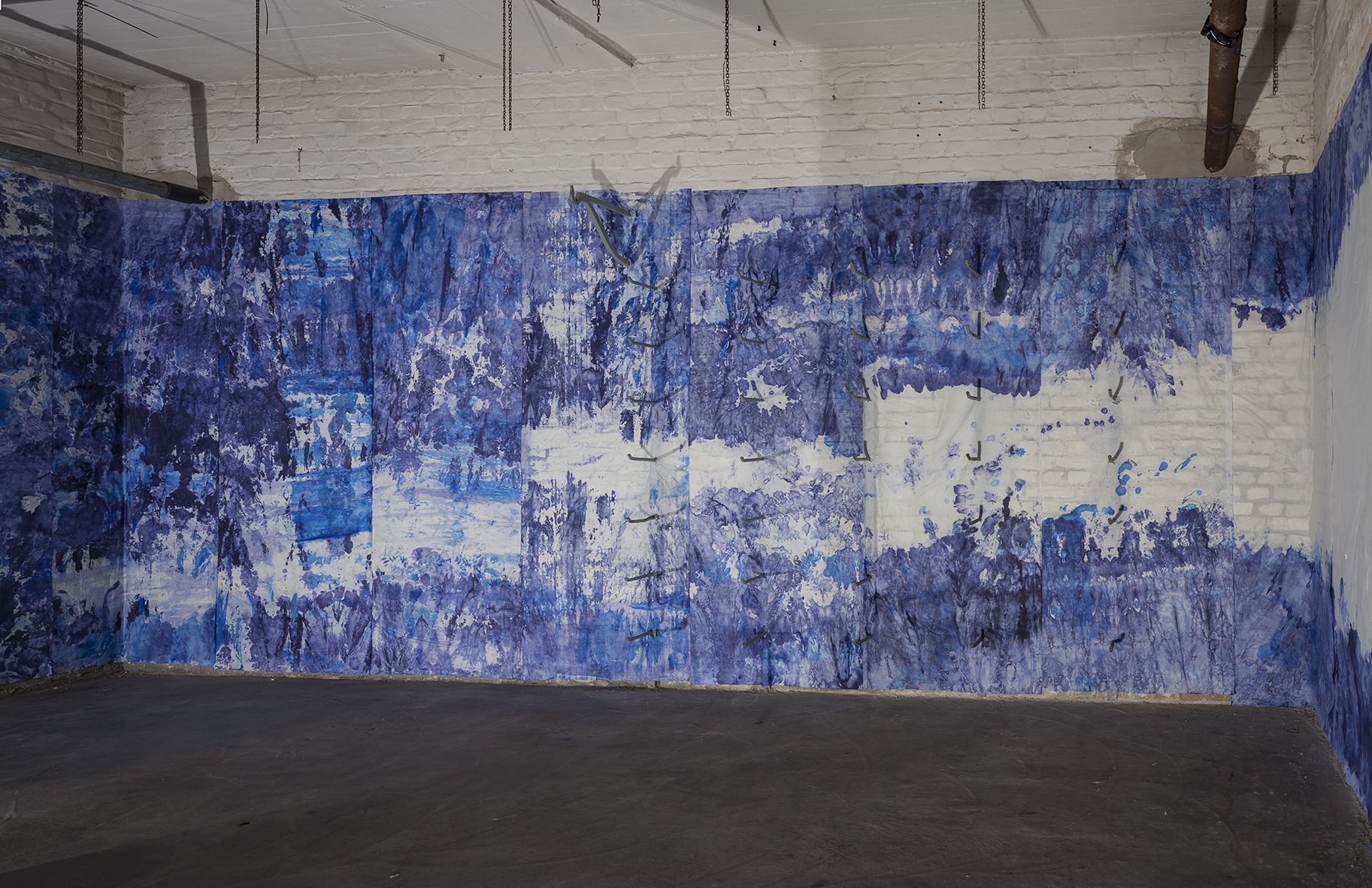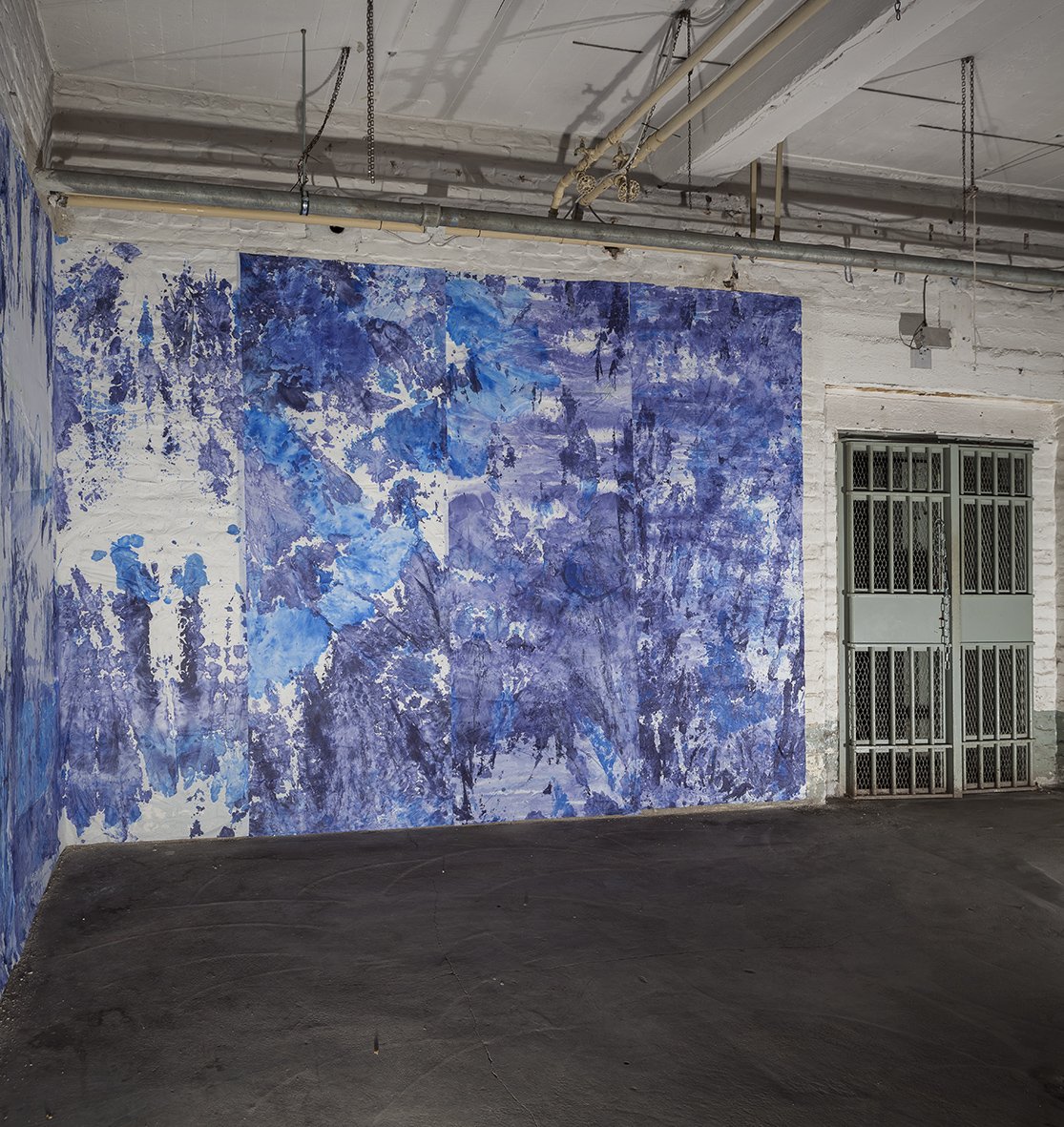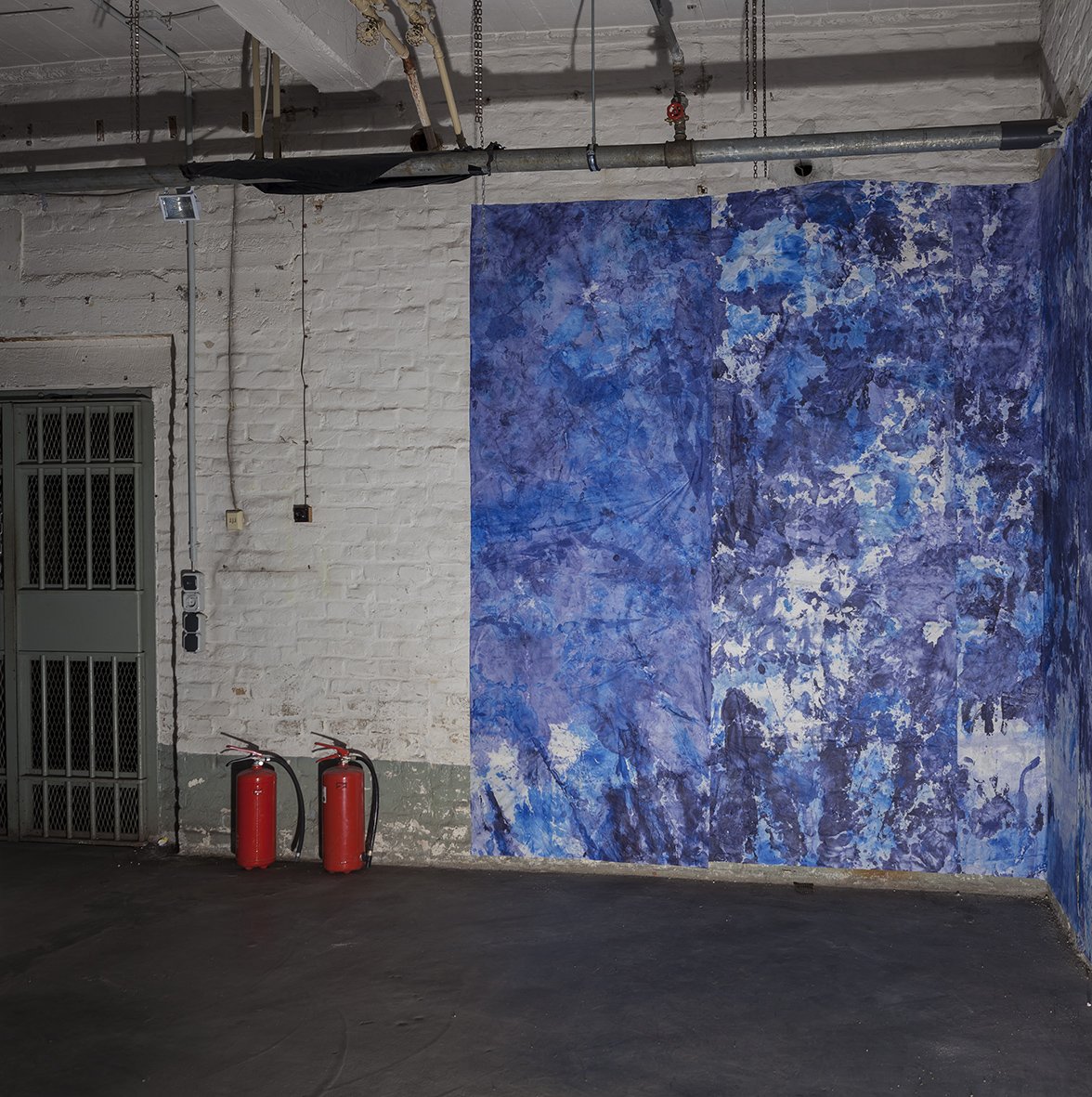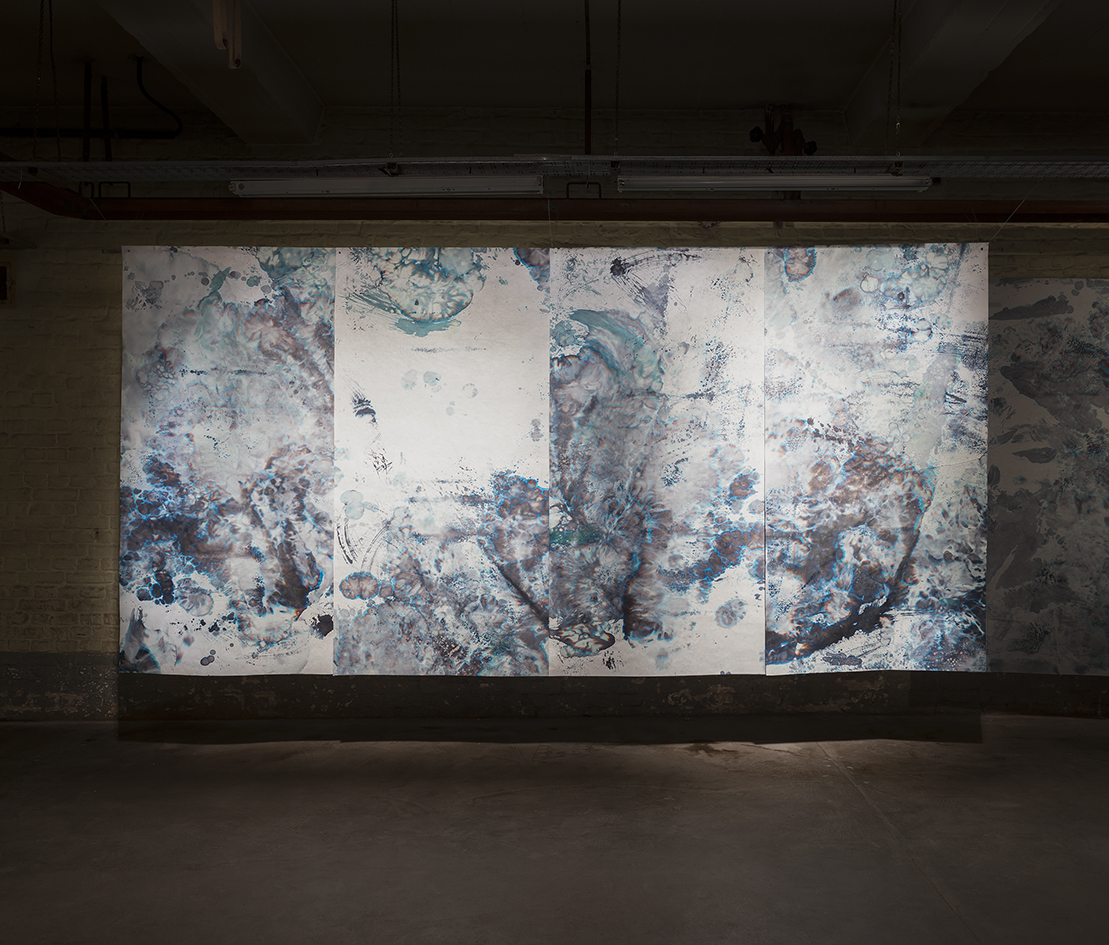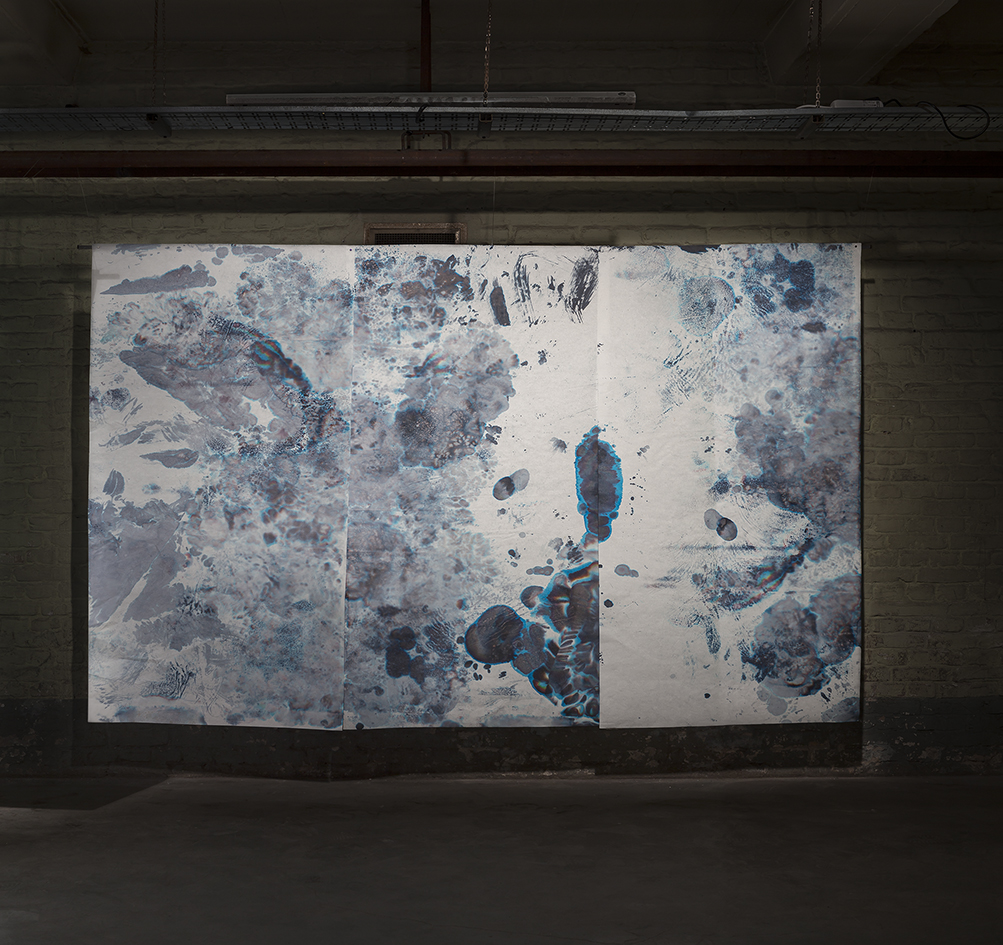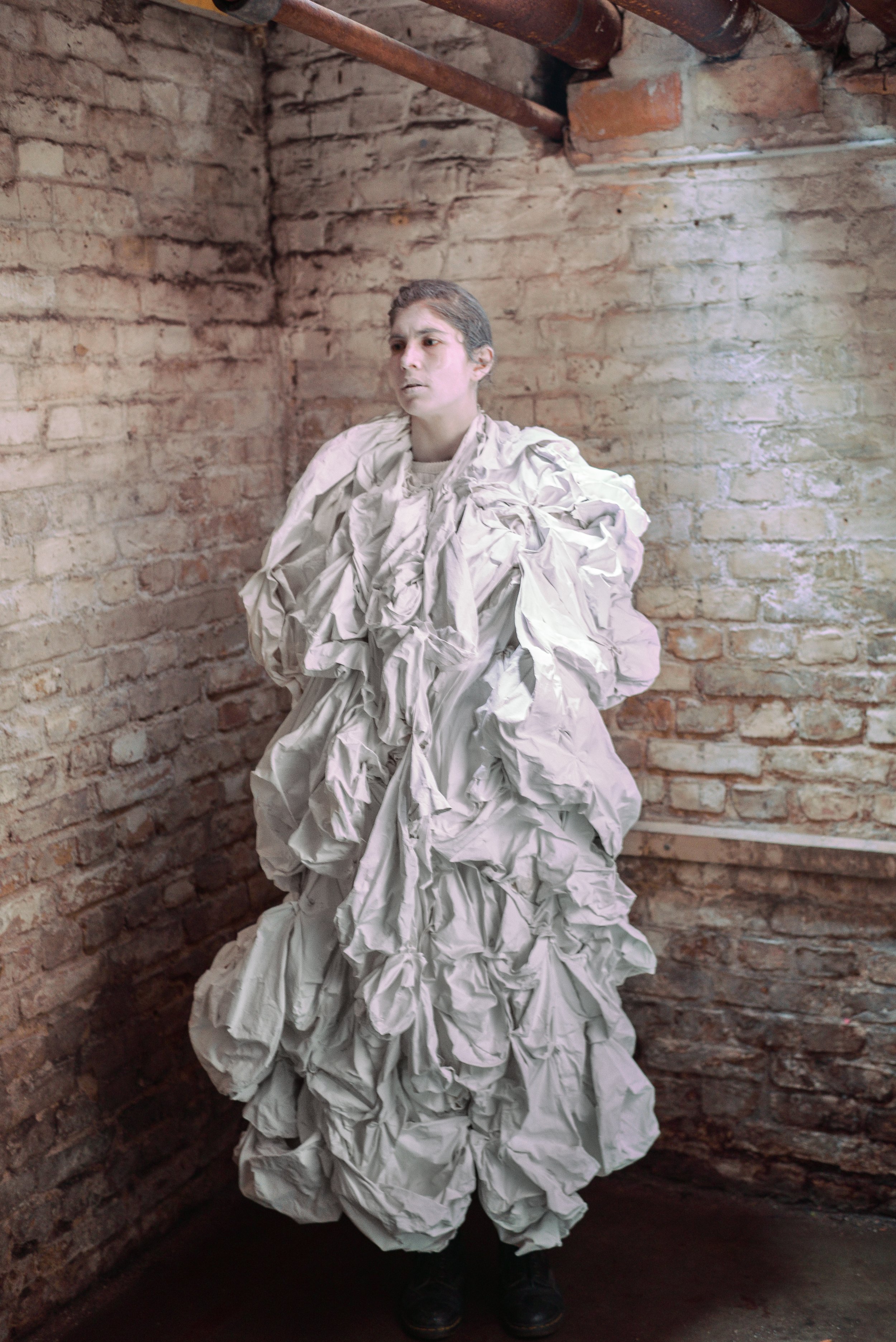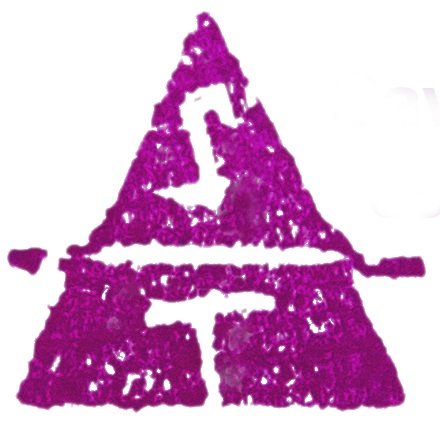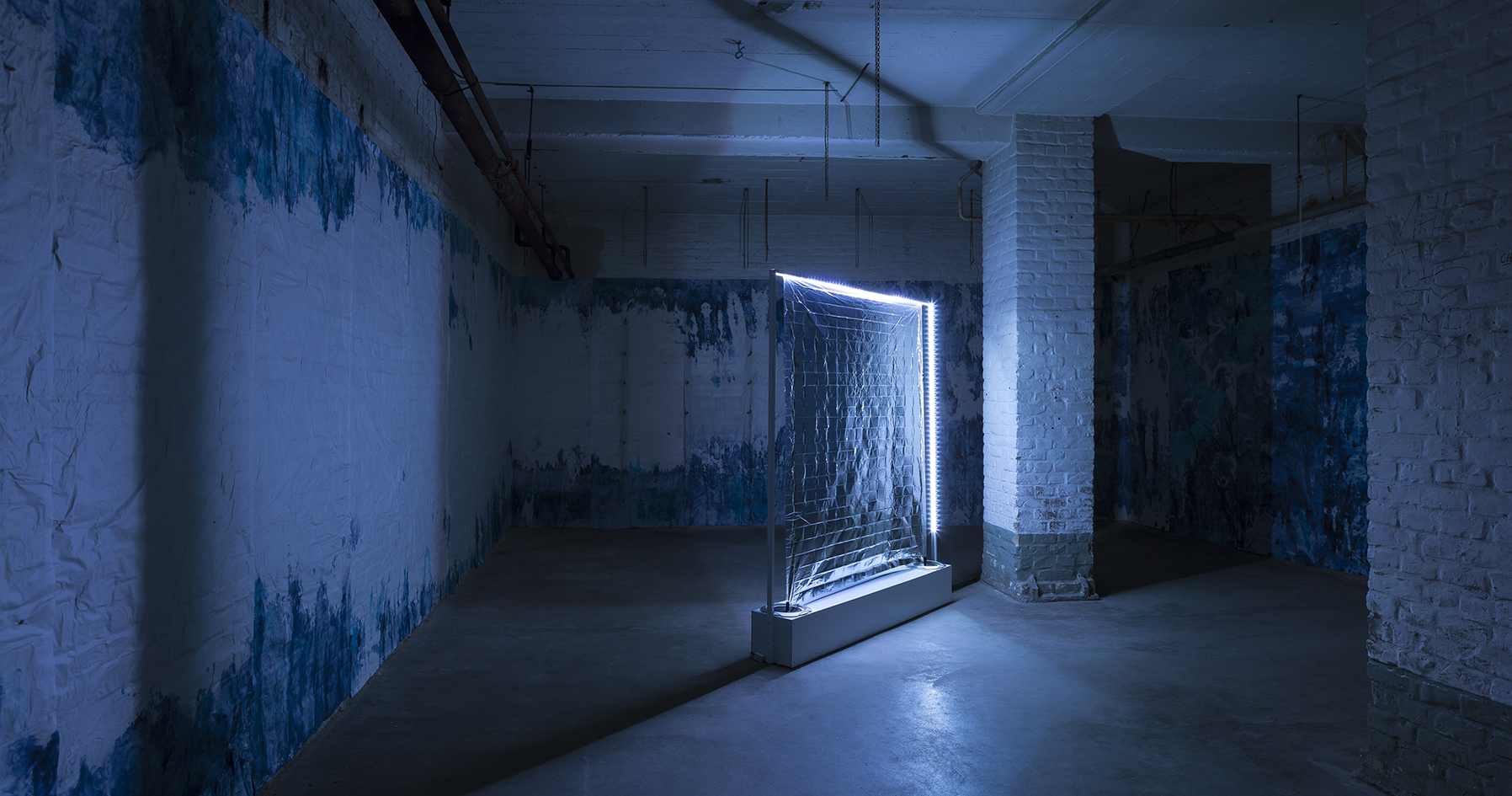
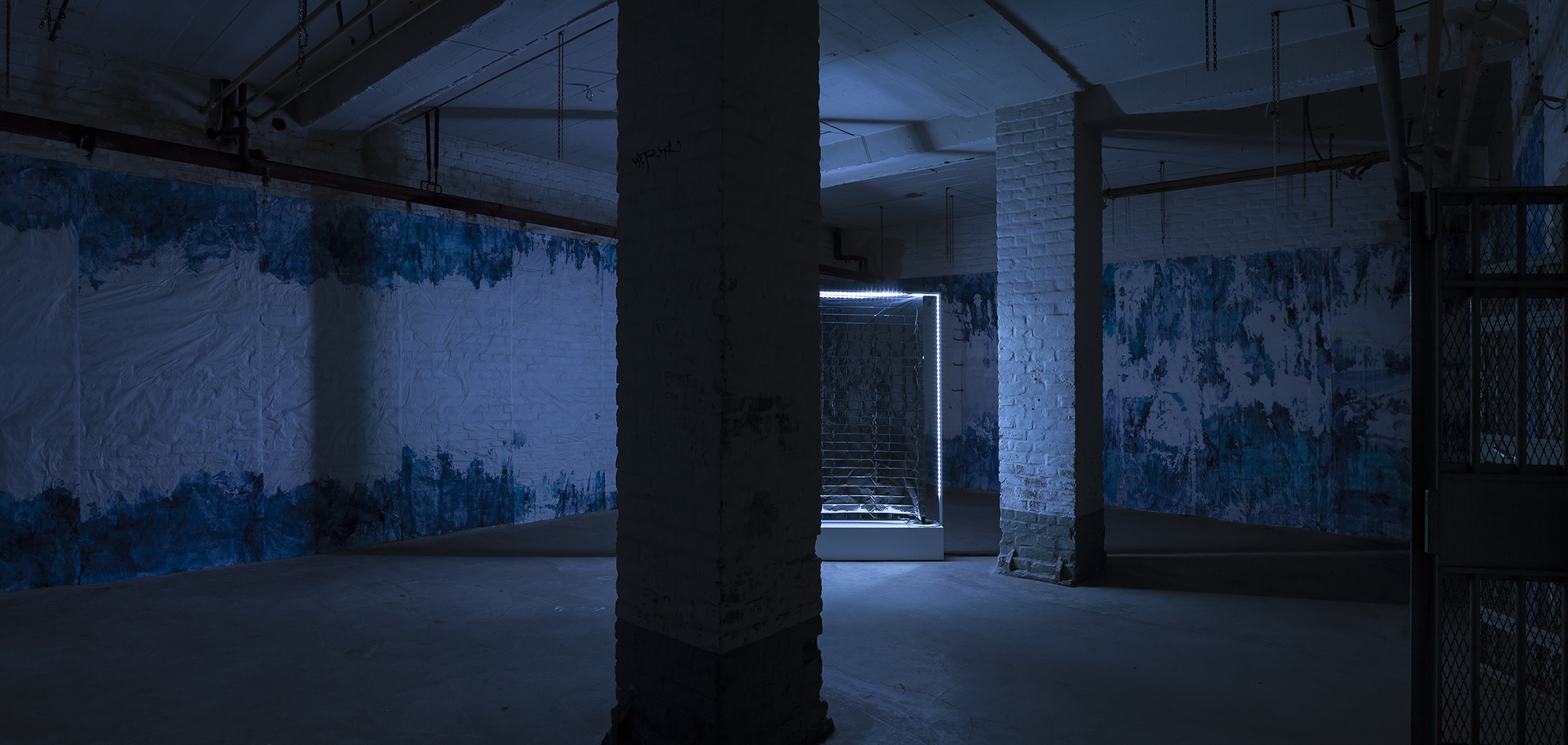
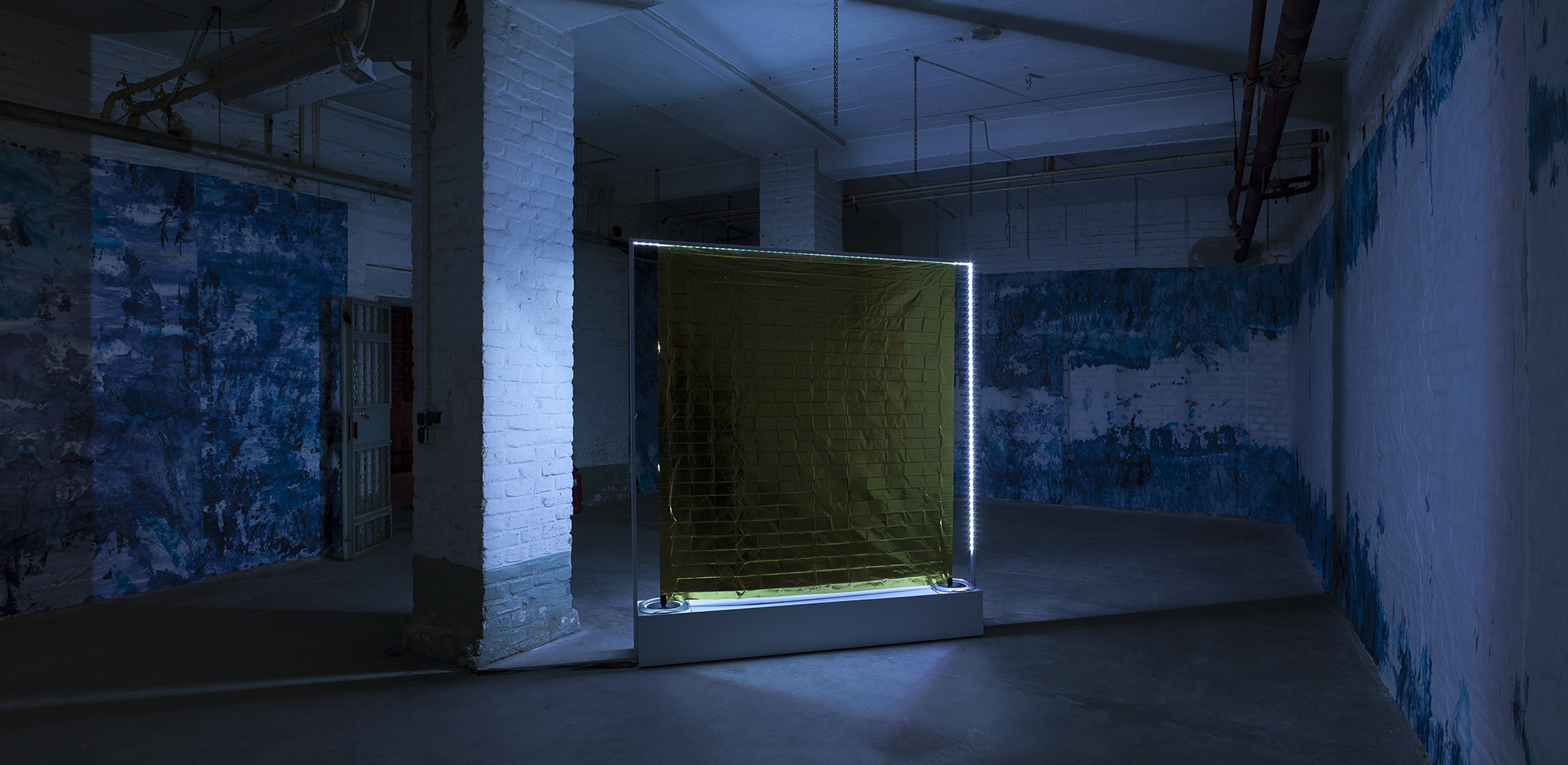
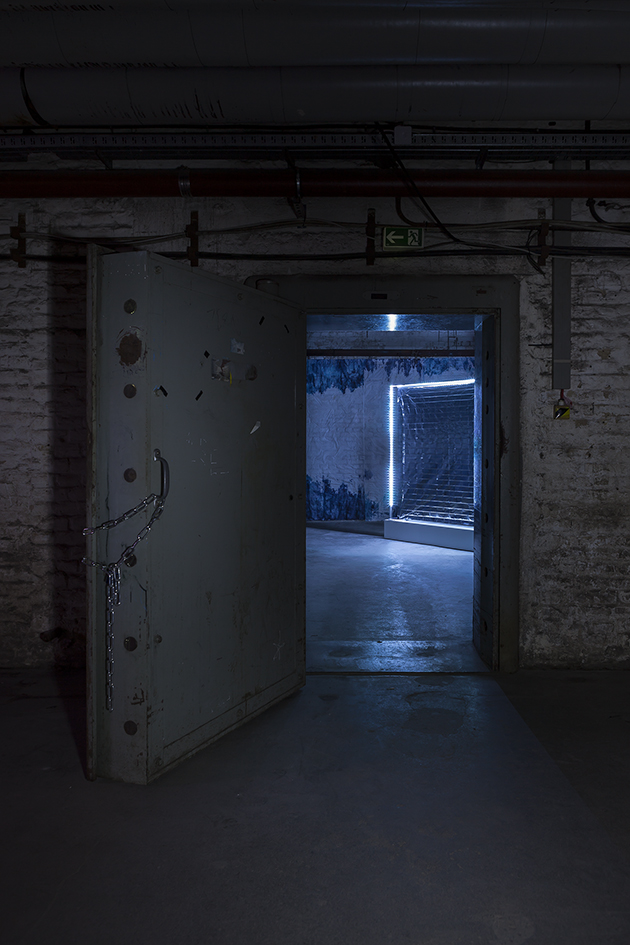

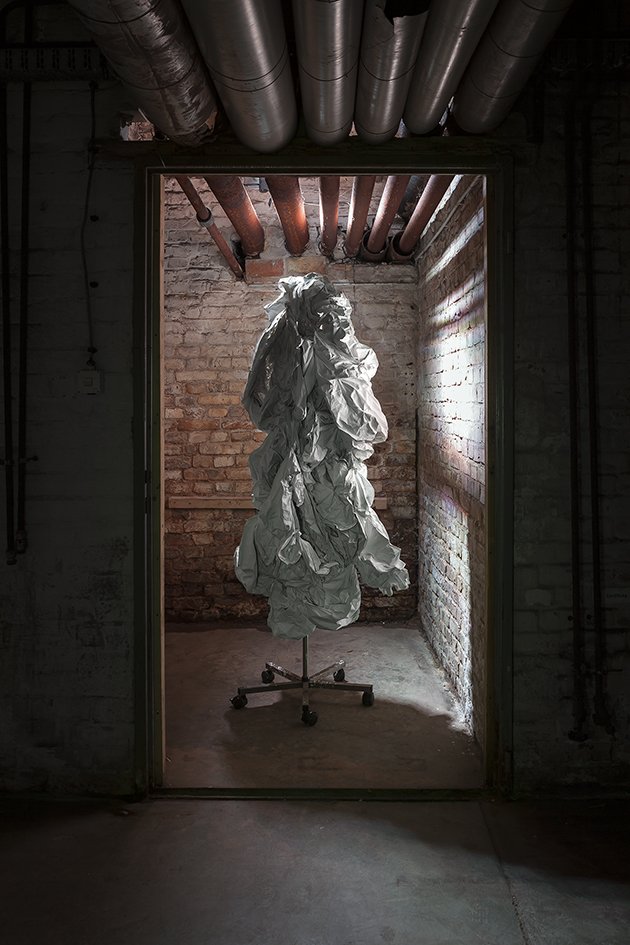
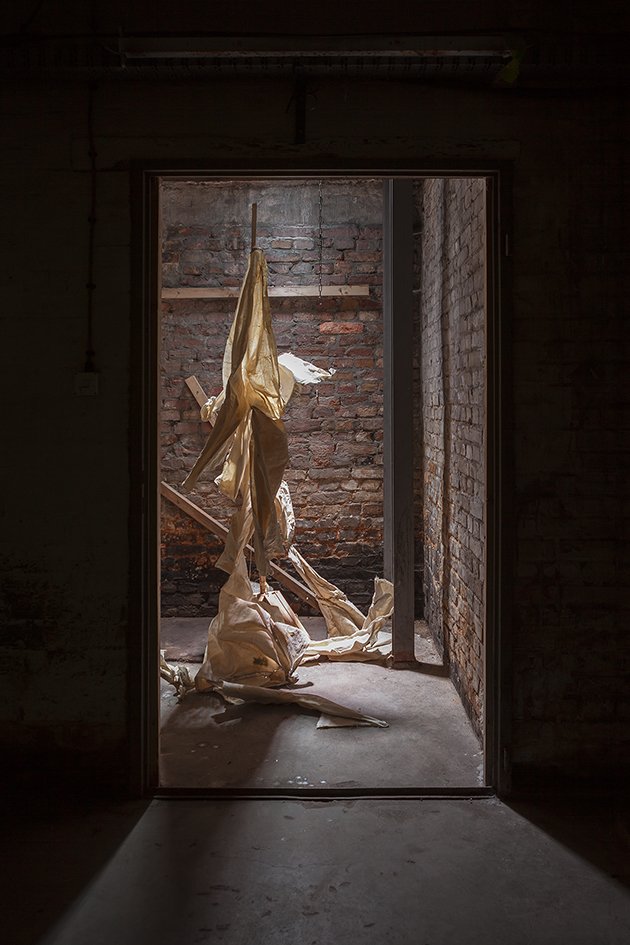
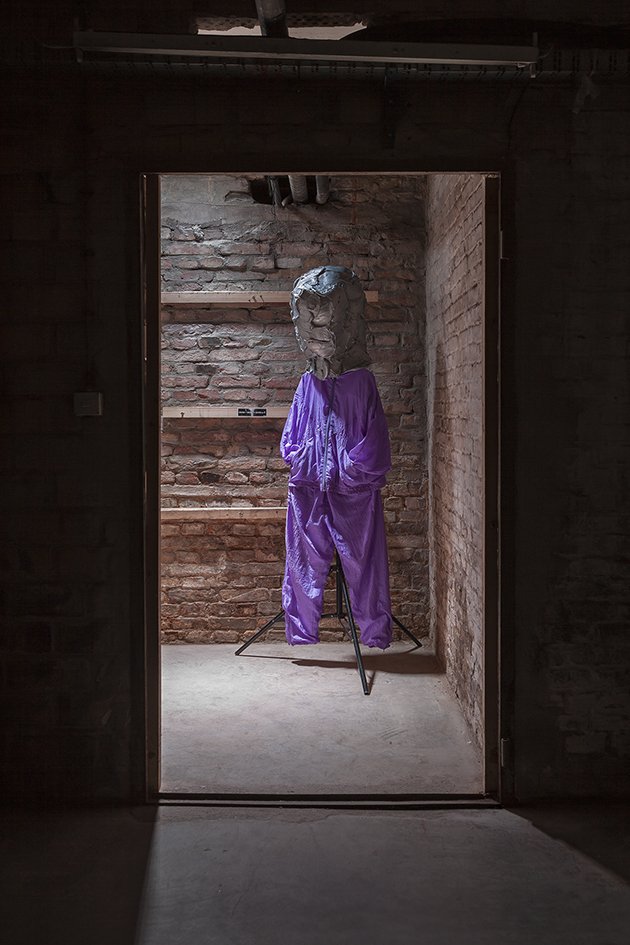
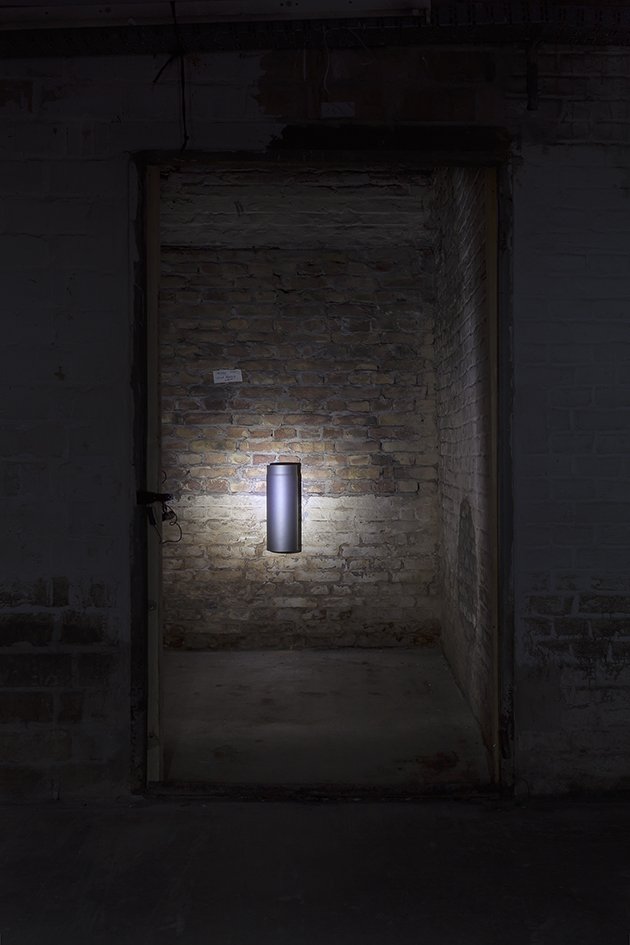
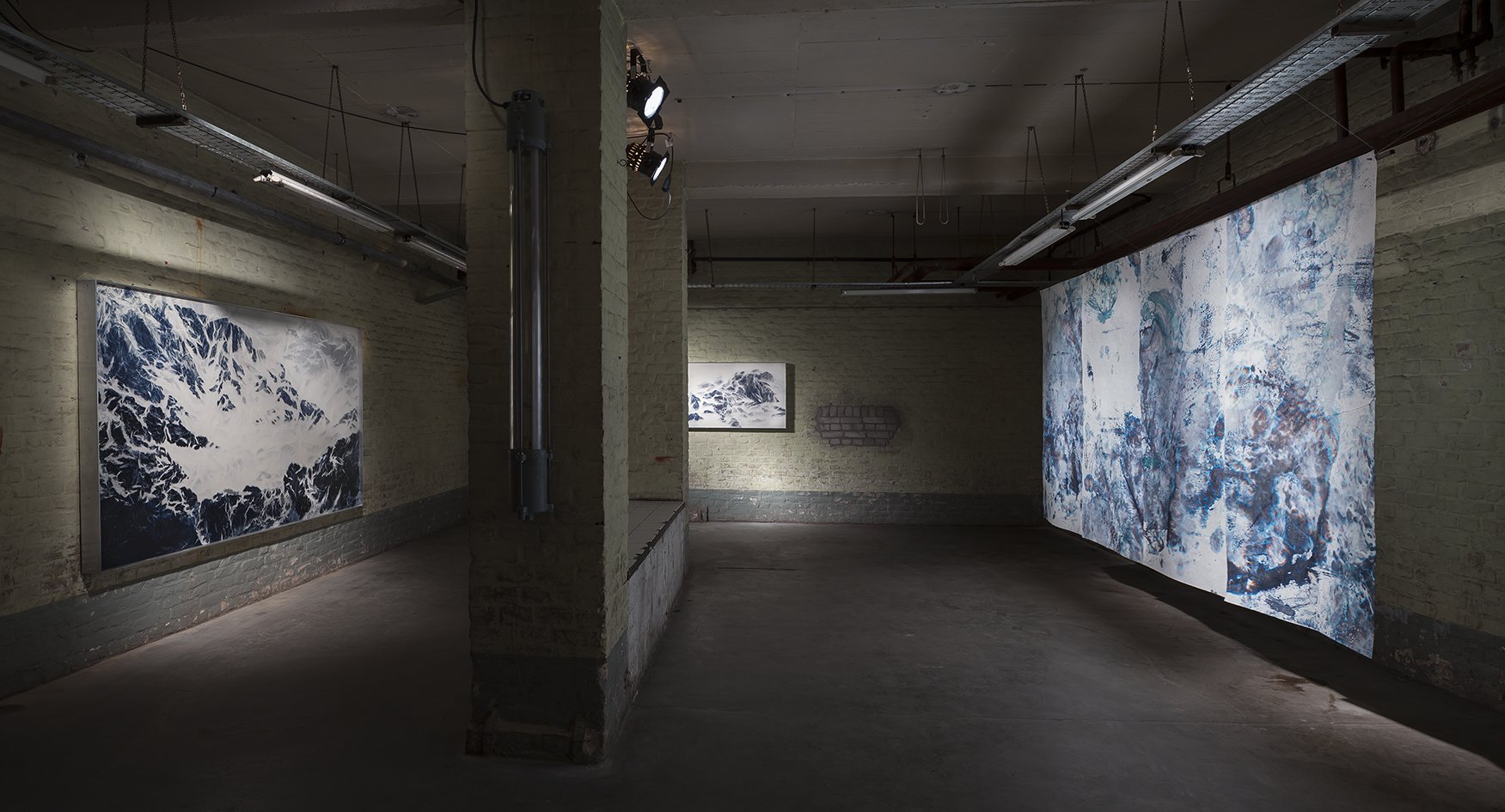
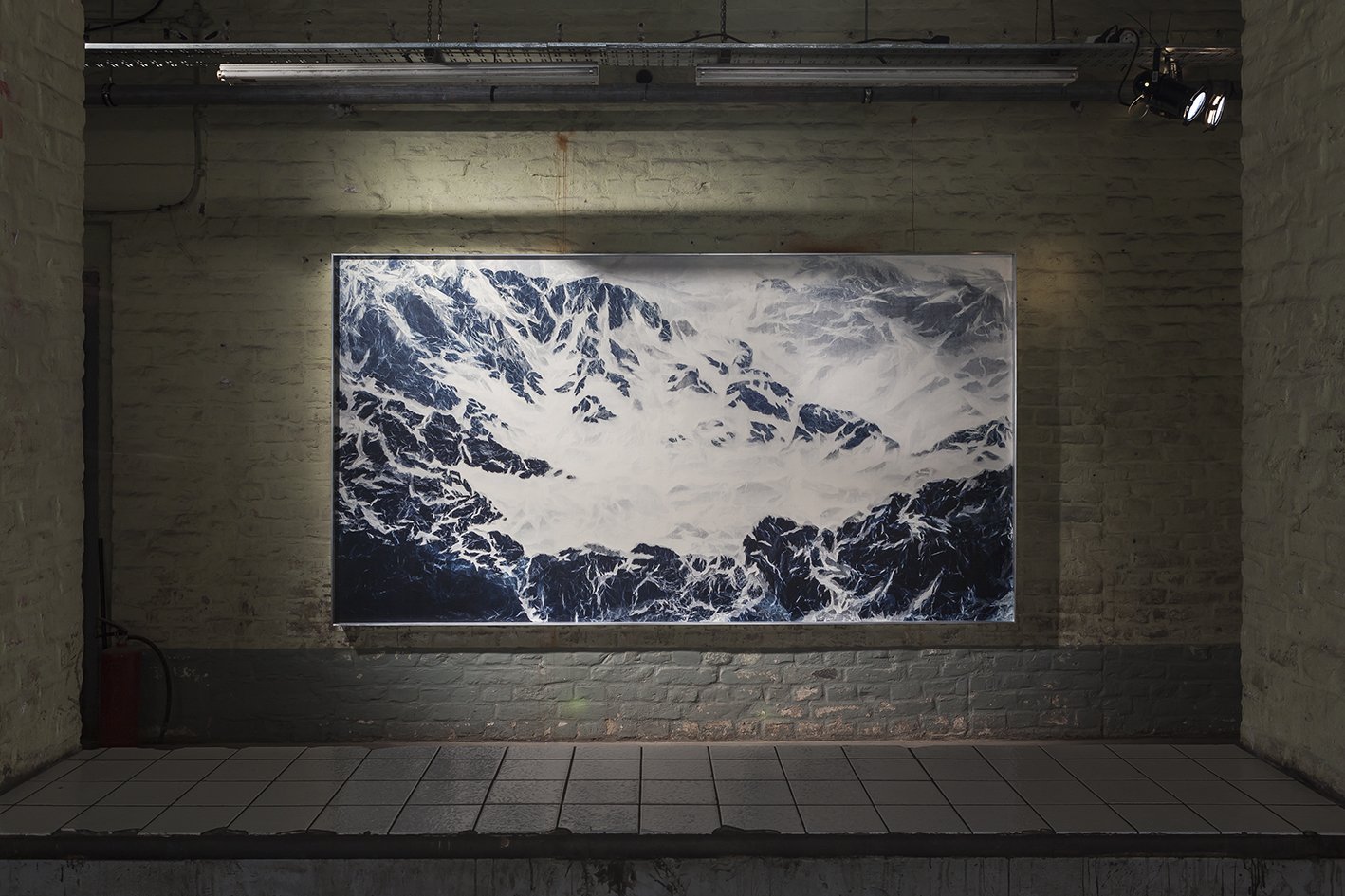
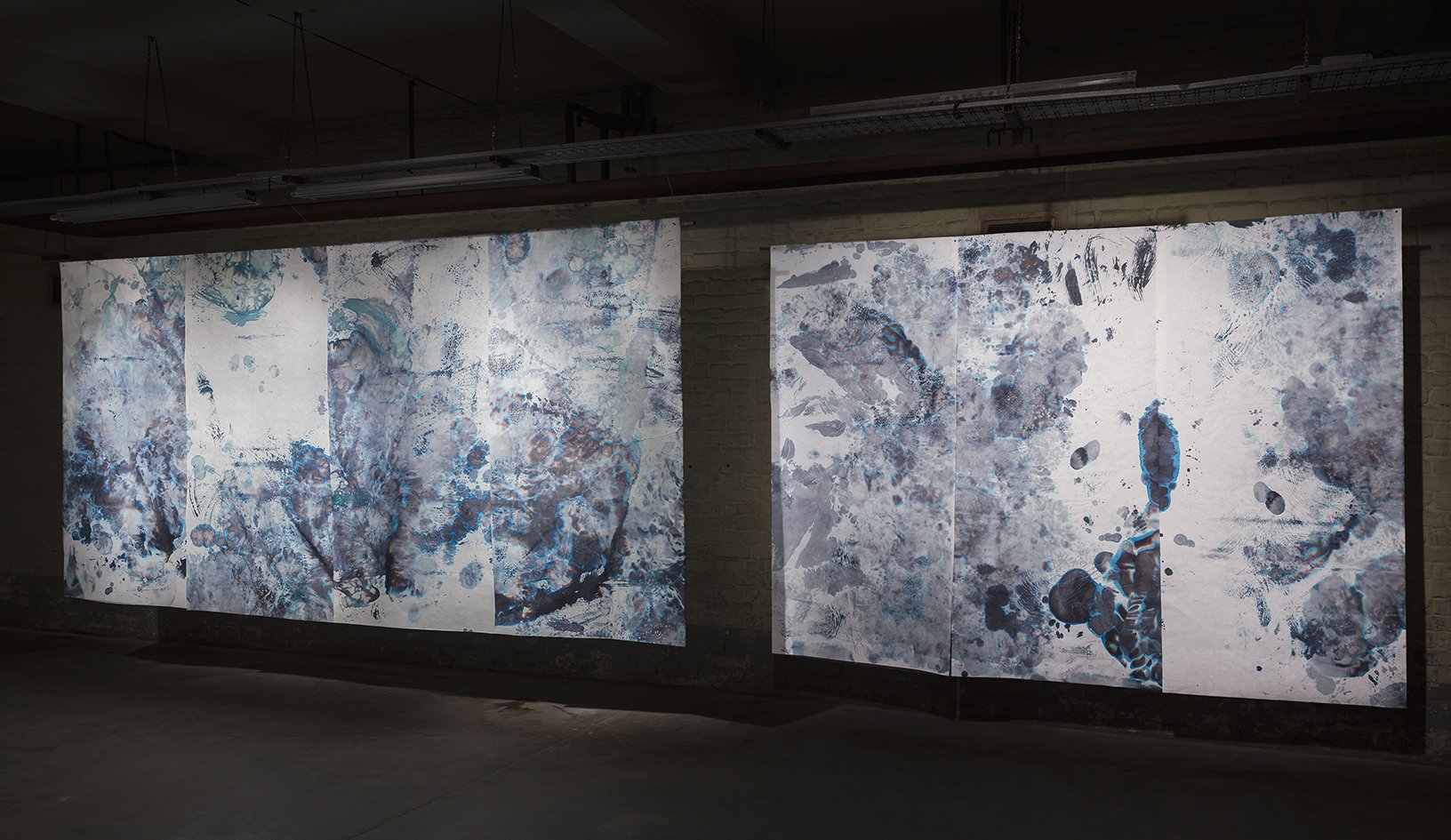
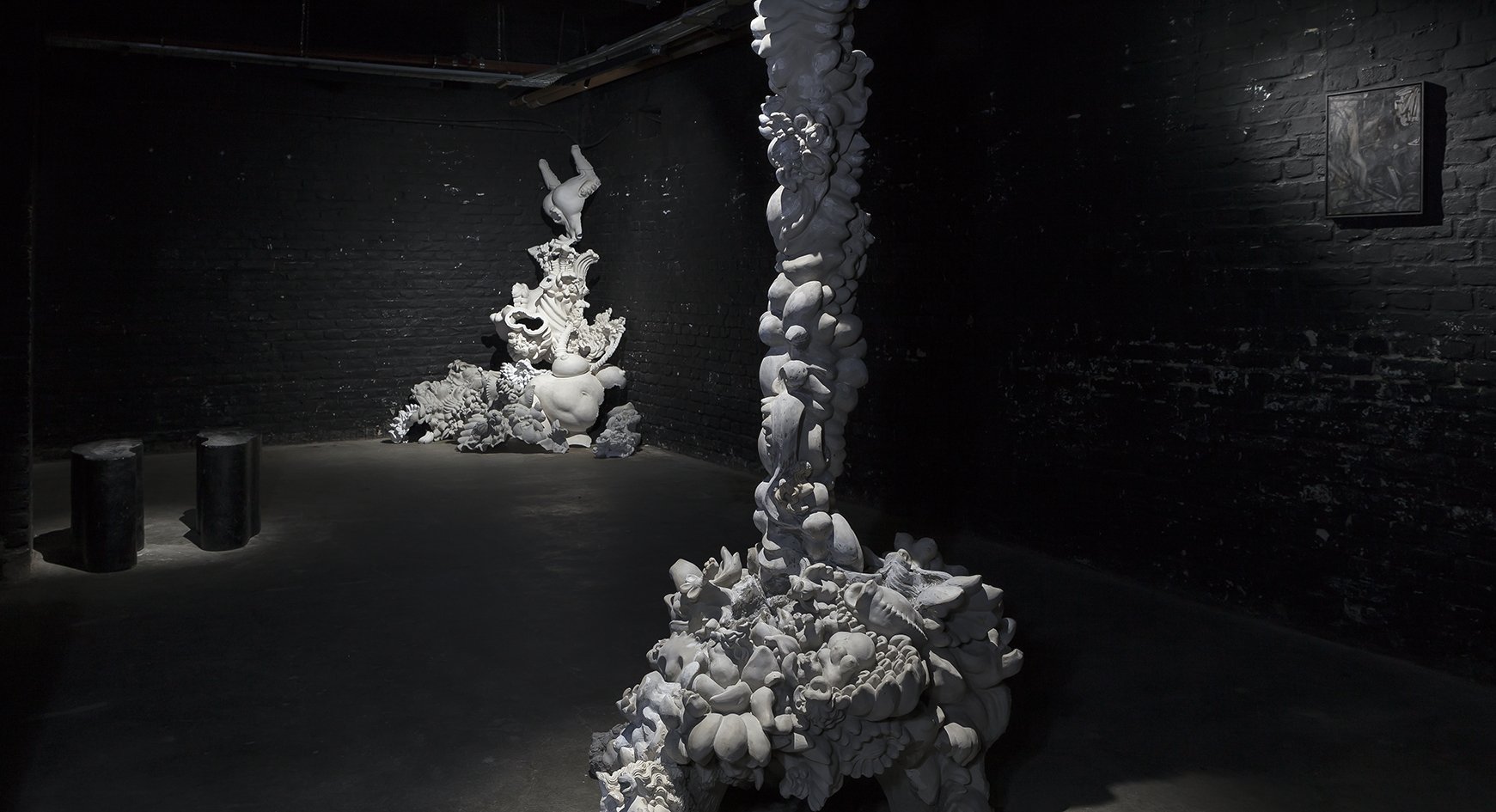
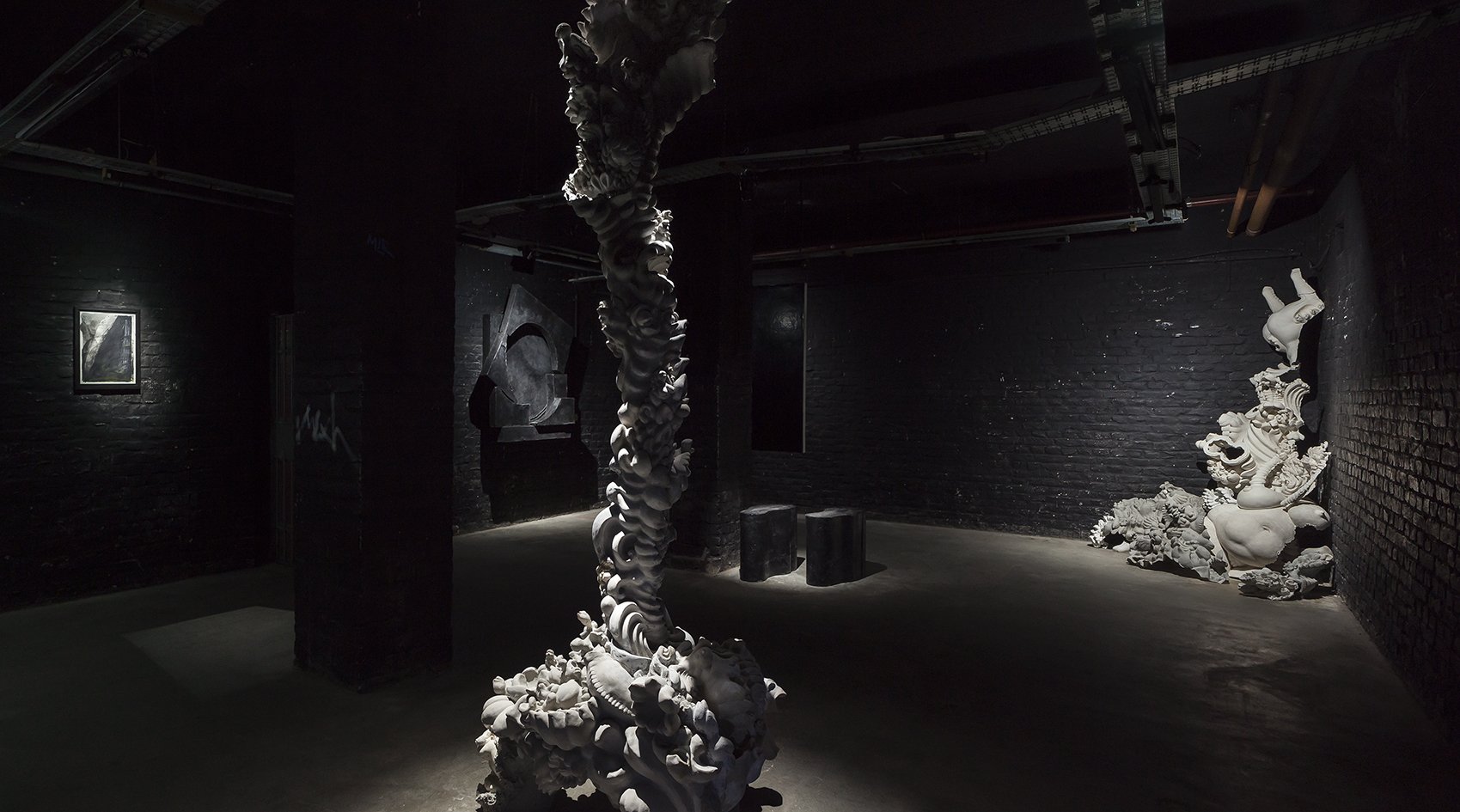
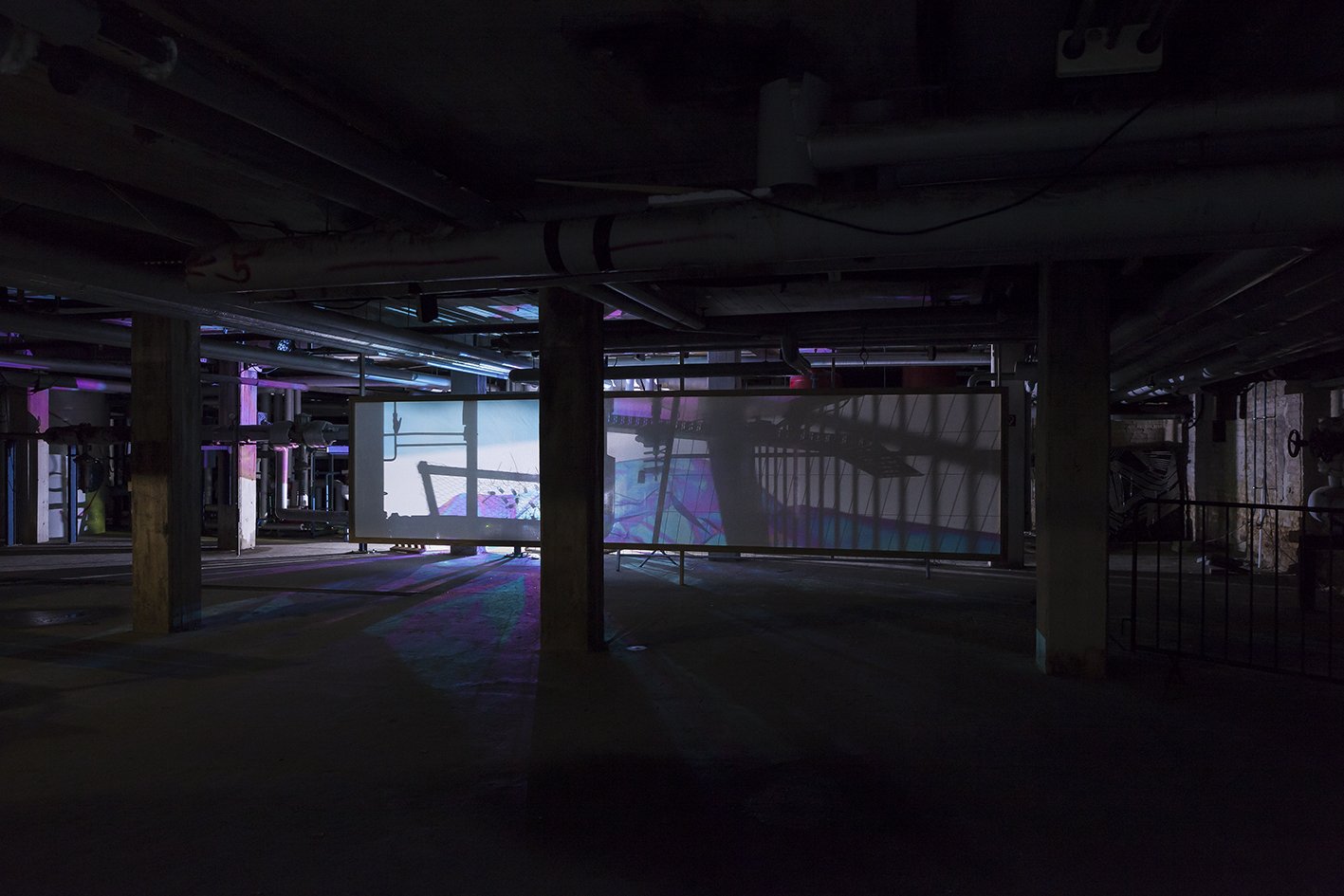
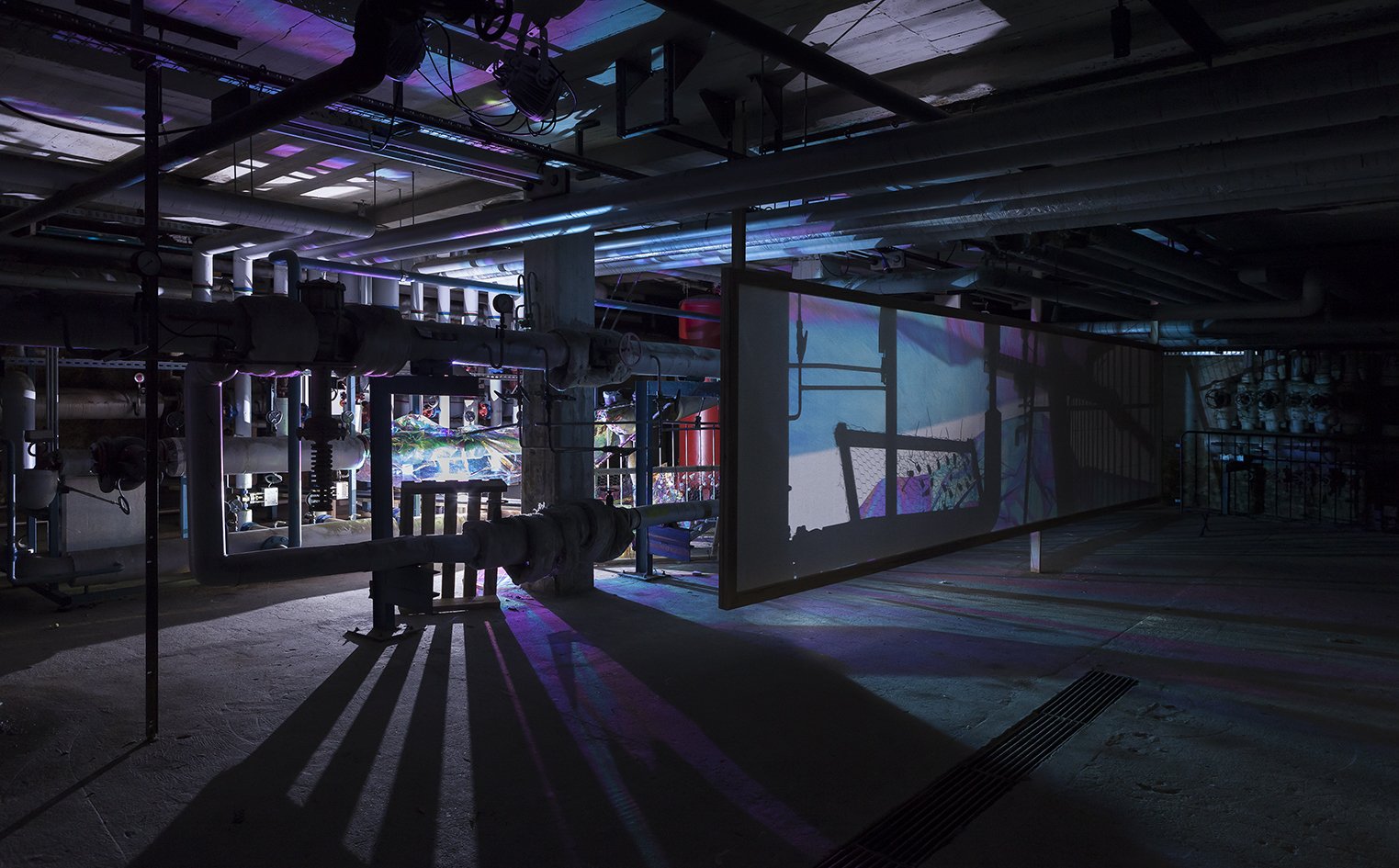
ECSTASIES TERESA
Alte Münze, Berlin
03/2018
St. Teresa of Avila, mystic and reformer of Catholic spirituality, lived and worked during the Siglo de Oro, a period marked by major historical events and profound transformations. At the age of 62, Teresa wrote what is considered her masterpiece, ‘The Inner Castle’, in which she refers to the seven inner dwellings, an itinerary of the soul’s personal and spiritual growth. Inspired by her intimate writings and her room in Avila ́s Carmelite monastery, the exhibition adapts and reinvents the ecstasies of Teresa, evoking and grounding them in the vaults of the Alte Münze.
We are first welcomed to the underground space in the twin rooms, resonant with unseen voices and coloured light. Immersed in humidity, plants imprisoned and attached to the machines sing along with colourful geothermal material. With their heavy metal doors, brass locks and hidden iron mesh gates, diverse scenarios are protected in the three vaults, where the treasures of time passed were once stored. Scraps of sculpture and recycled tunics, masks and ambiguous material occupy the dark interstices and in-between spaces of these heavily fortified compartments. In the central vault is collected the volatile material of the landscape and its constituent elements, where the quality of lightness accumulates. Facing this triad of monumental safes and looking into the dark corridor, five niches preserve a sample of interior objects that refer to immobility. Guided by the green smell of lubricating oils, we then enter the machinery room with its complex interweaving of old pipes running along the wall and the ceiling, which become the canvas for a light installation. In this place, between a crypt for rituals and a museum not yet restored, the attempt is made, once again, to transform shit into gold. Blessed are the eyes that see.
Saverio Tonoli
Notes for the painting installation Raumfahrt, 2018 (Saverio Tonoli): Imagining to lift up the whole room in the space, Raumfahrt suggests an abstract landscape miles away from the earth whose colour tears off gradually in the middle, opening up a white space. In this empty space, the bricks of the wall are visible through the transparency of the rice paper, bringing back the real space in the room. The installation is inspired from ancient tapestries - pictorial backgrounds representing the sky, where suddenly an epiphany is taking place. I created the atmosphere of the room inviting a light and sound artist, Olaf Schirm, whose sound sculpture illuminates the room and creates sound by transmitting vibrations from two speakers to a metal foil.
ALTE MÜNZE
The Alte Münze is a historic area in the vicinity of the Alexanderplatz which offers space for creative artists, companies and rental for various formats. The buildings in one of the oldest neighborhoods of Berlin are characterized by a lively mix of uses and stand for innovative conversion of historic city spaces for a diverse forward-looking urban society. The oldest noted mention of the Berlin Mint dates back to 1280. The development of coinage in Berlin has a varied history and a more than 700 year tradition. In 1701, the Prussian King Frederick I commissioned a new building for the Royal Mint, and under Frederick the Great the coinage was finally reorganised in 1750. The Berlin mint was given the letter “A”, which is one of the oldest trademarks in the world, and is still valid today. On 16 July 1990, shortly after the fall of the Berlin Wall and the creation of the Monetary, Economic and Social Union between East and West Germany, production of Deutschmarks began here. At the same time, extensive construction and rationalization measures were implemented over the following months to bring production levels closer to other German mints. In 1999, the production of Euro coins began here. Up to 850 coins of this new currency were minted per minute per machine. For the introduction of the Euro on 1 January 2002, the Berlin State Mint coined a total of 3.4 billion pieces and assembled 12 million starter kits. Since the end of 2005 / beginning of 2006, the Staatliche Münze left Berlin-Mitte and has since been producing in Berlin- Reinickendorf. (translated extract from: alte-muenze-berlin.de)
Artists: Erik andersen, Davide Gennarino, Miriam Lenk, Olaf Schirm, Zuzanna Skiba, Saverio Tonoli, Juan Varela, Wu Chi-Tsung,
Vernissage - performance program curated by Saverio Tonoli
Raphaël Faure | Zoe Goldstein – Performative sculptures
Aural – Plant sonification live performance
Finissage - performance program curated by Tatwerk
Yuko Kaseki & Marion Steinfellner – Extatic Vision
Richard Gonlag – forest/machine/slaughterhouse-prayer (Part 3)
Martina Bertoni & Munsha – Cellos concert
Organisation, Curatorship, Texts: Saverio Tonoli
Light & Sound Design: Tatwerk
Graphic Design: Mia Subirana, Nona Schmidt
Photography: Julius Studio
Text Consultant: Zoe Goldstein
Camera & Editing: Branka Pavlovic
Partners: Alte Münze, Spreewerkstätten, Casa Marziano, Oecus, Istituto Italiano di Cultura, Tatwerk, Kunstamspreeknie
ECSTASIES TERESA - Video Trailer
